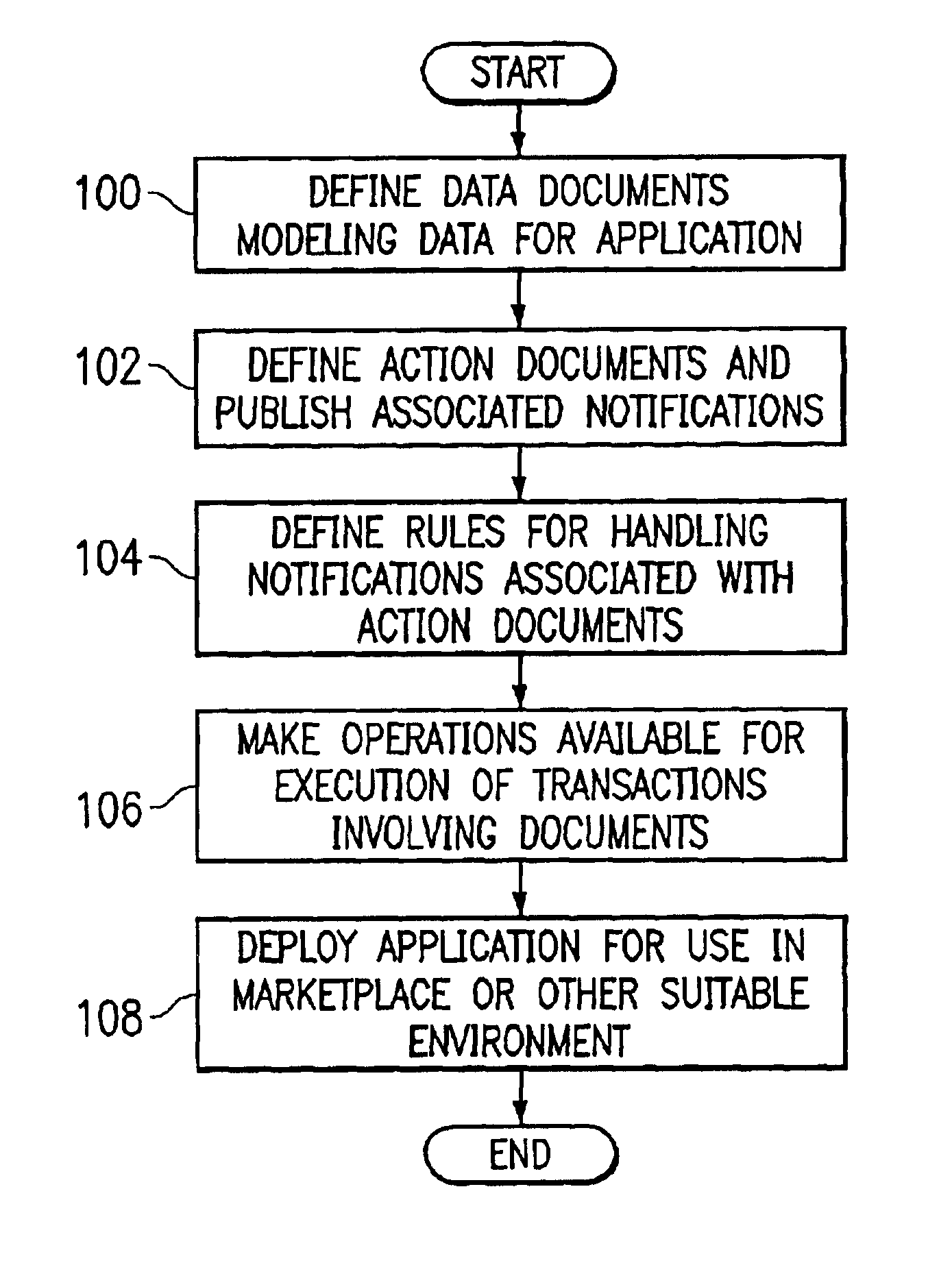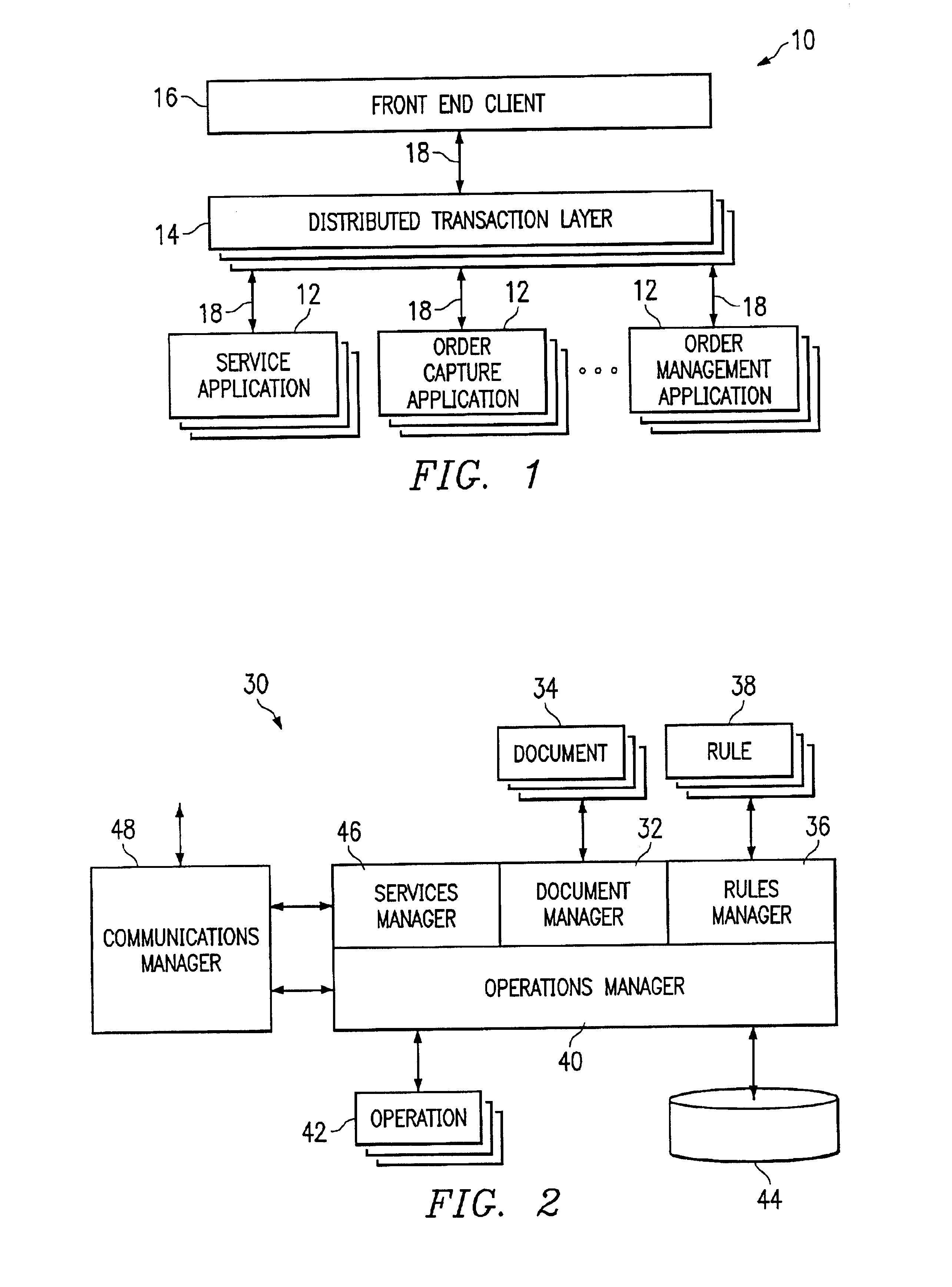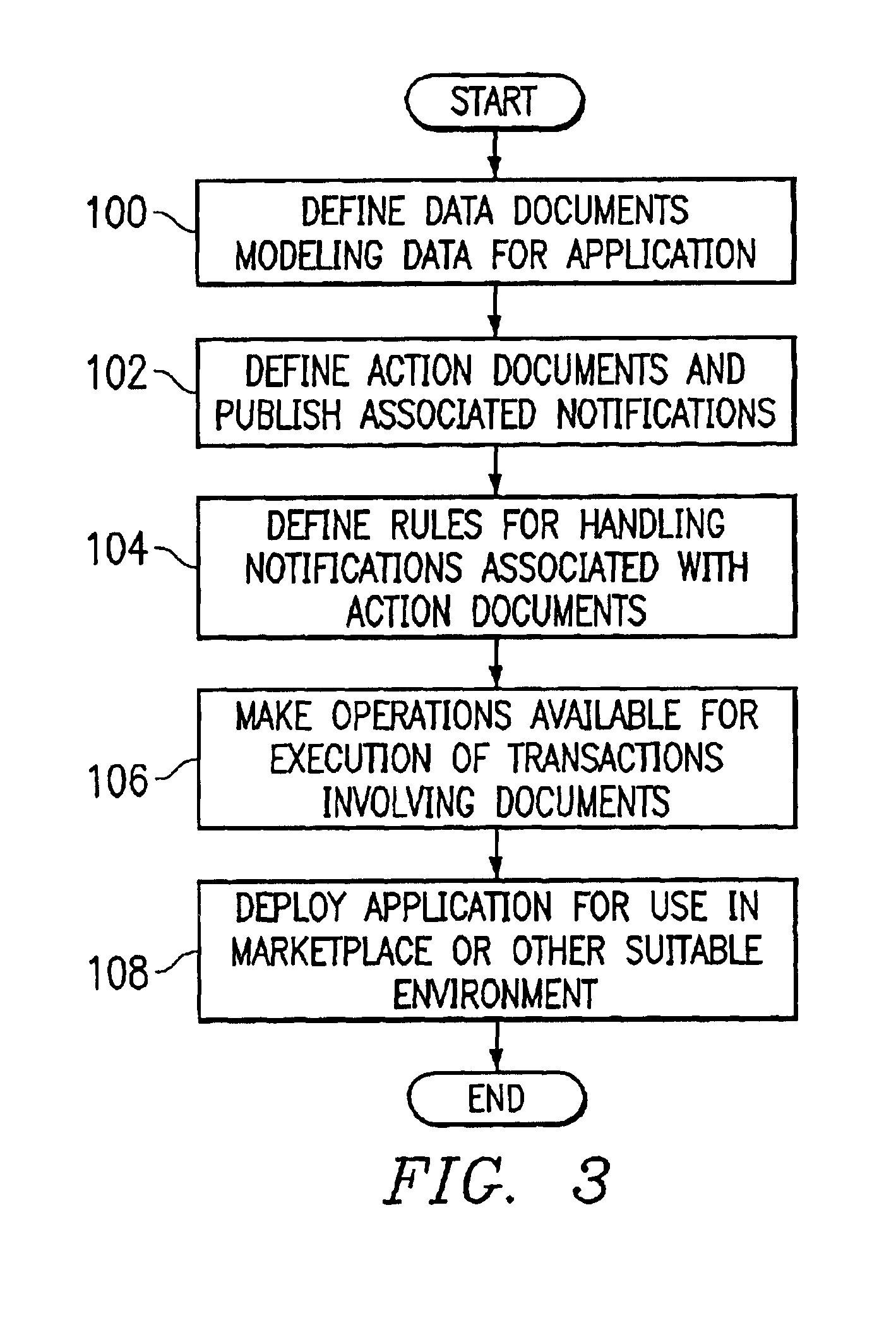System and method for developing software applications using an extended XML-based framework
a software application and framework technology, applied in the field of software development, can solve the problems of performance penalties, difficult modification of applications, and relatively slow development of electronic marketplaces, and achieve the effect of substantially reducing the problems and disadvantages of previous techniques for developing software applications
- Summary
- Abstract
- Description
- Claims
- Application Information
AI Technical Summary
Benefits of technology
Problems solved by technology
Method used
Image
Examples
Embodiment Construction
ons;
[0013]FIG. 3 illustrates an exemplary method of developing a software application using an extended XML-based framework; and
[0014]FIG. 4 illustrates exemplary execution of a software application developed using an extended XML-based framework.
DETAILED DESCRIPTION OF THE INVENTION
[0015]FIG. 1 illustrates an exemplary system 10 that includes one or more modular software applications 12 development using an extended XML-based framework. In general, applications 12 communicate with one another and with a front end client 14 using a distributed transaction layer 14 to provide one or more suitable capabilities associated with a front end client 16. Front end client 16 may be associated with any appropriate website, electronic marketplace facilitating business-to-business (“B2B”), business-to-consumer (“B2C”), or other transactions, or other suitable system operating to provide information to or facilitate transactions with one or more users of front end client 16. Applications 12, tra...
PUM
 Login to View More
Login to View More Abstract
Description
Claims
Application Information
 Login to View More
Login to View More - R&D
- Intellectual Property
- Life Sciences
- Materials
- Tech Scout
- Unparalleled Data Quality
- Higher Quality Content
- 60% Fewer Hallucinations
Browse by: Latest US Patents, China's latest patents, Technical Efficacy Thesaurus, Application Domain, Technology Topic, Popular Technical Reports.
© 2025 PatSnap. All rights reserved.Legal|Privacy policy|Modern Slavery Act Transparency Statement|Sitemap|About US| Contact US: help@patsnap.com



